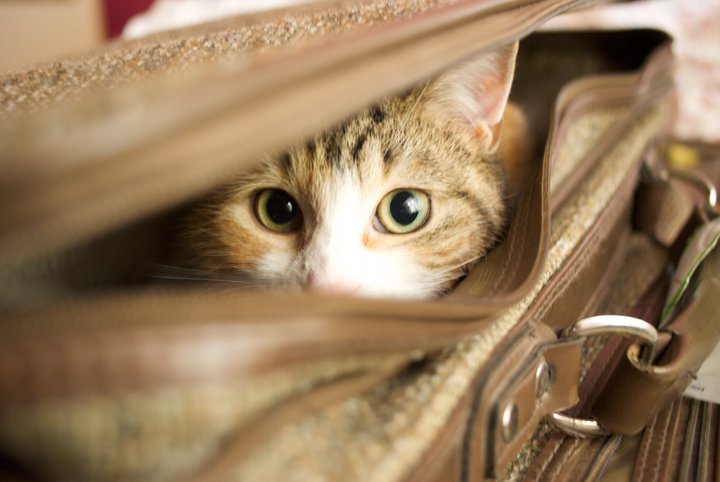As much as we love our cats, taking them on vacation may not be the best way to express your affection. It’s the rare cat who travels well – they tend to like their own turf and their own routines, and travel upsets both of those things.
So, if you plan a short trip, a sitter or visiting cat-lover who cares for your cat at your home, might be the least stressful solution for all concerned. For an extended trip however, or – if your cat has that rare personality that lends itself to travel, here are some pointers to make the journey easier.
- First, make sure that your cat is examined and up to date on all vaccinations.
- Next, ask for copies of your cat’s medical records and take them with you on your trip. It might sound unnecessary, but in an emergency you will be glad that you have these when visiting a new veterinarian.
- And another important thing is to have your vet implant a microchip (painless and safe), and make sure that all of your contact information is recorded with the microchip company. I can’t tell you the number of pets who have scampered away while traveling but were soon reunited with their families because of a microchip. A found animal is scanned with a reader (all vets and shelters have them) and the number on the microchip is used to locate the owner.
Long before your vacation date, get your cat used to being in a cat carrier. Leave the carrier out and open, and encourage your cat to go inside to get a favorite treat you put inside. Occasionally, just close the carrier, pick it up and walk around your home with your cat inside to get the cat used to the motion of being moved and carried. Once that behavior is well tolerated, then try short car rides with the cat in the travel carrier.
Make absolutely sure your name and phone number are visibly labeled on your carrier. Place a wee-wee pad on the bottom of the carrier and make sure to have several spares at the ready. In the event that your cat soils or gets motion sick, these absorbent, waterproof, disposable pads are indispensible.
Cats have ways of getting out of almost any neck collar, and if they’re stressed they may feel very motivated to do just that. A “Figure 8 Harness” is far safer to use than collars, and you can easily attach a leash for control and leading. There are many good Figure 8 harnesses on the market, but be careful to make sure it fits perfectly. Click on this link to view some harnesses and pick the one that’s best for your cat: Cat Harnesses.
On travel days it’s best for your cat to have an empty stomach. A missed breakfast or two shouldn’t be a problem, but you will want to make sure that your cat’s dinner is especially palatable to encourage eating a full meal that evening – and each evening of your journey for that matter. Make the travel fun!
When you arrive at your destination, carefully check your room or rental for open windows, back hallways, any kind of way that your cat might make a run for it, thinking that home could be just around the corner. Choose a very secure and small area or room, and furnish it with your cat’s favorite toy, food, water, a bed and a litter pan so your pet will feel comfortable and begin to acclimate to the new location.
During those first few days, spend as much time as you possibly can in that space with your cat, recognizing that change is not something cats enjoy. The more secure you can make your cat feel, the faster its acclimation to a new environment. When your cat appears comfortable, gradually increase the amount of space they can go into. Gentle and measured acclimation is the way to go for cats.
Cautions out of the way, I emphasize that taking your cat on your drive-to vacation to a fun place for all, means your whole family can be together, enjoying your shared time off. If you have a cat with the right attitude and the right management, this can be, indeed, a treat. But I urge you to think seriously as to whether or not you have the “right cat”. If you don’t, it won’t be a fun vacation for either of you.


Recent Comments